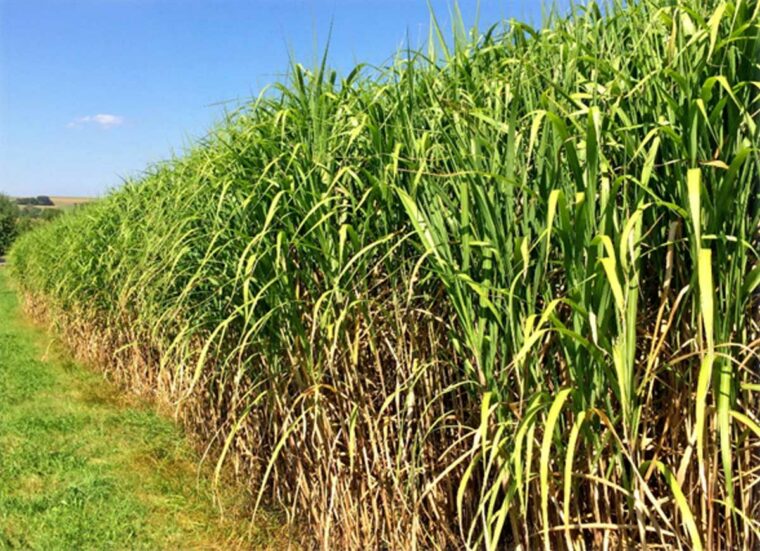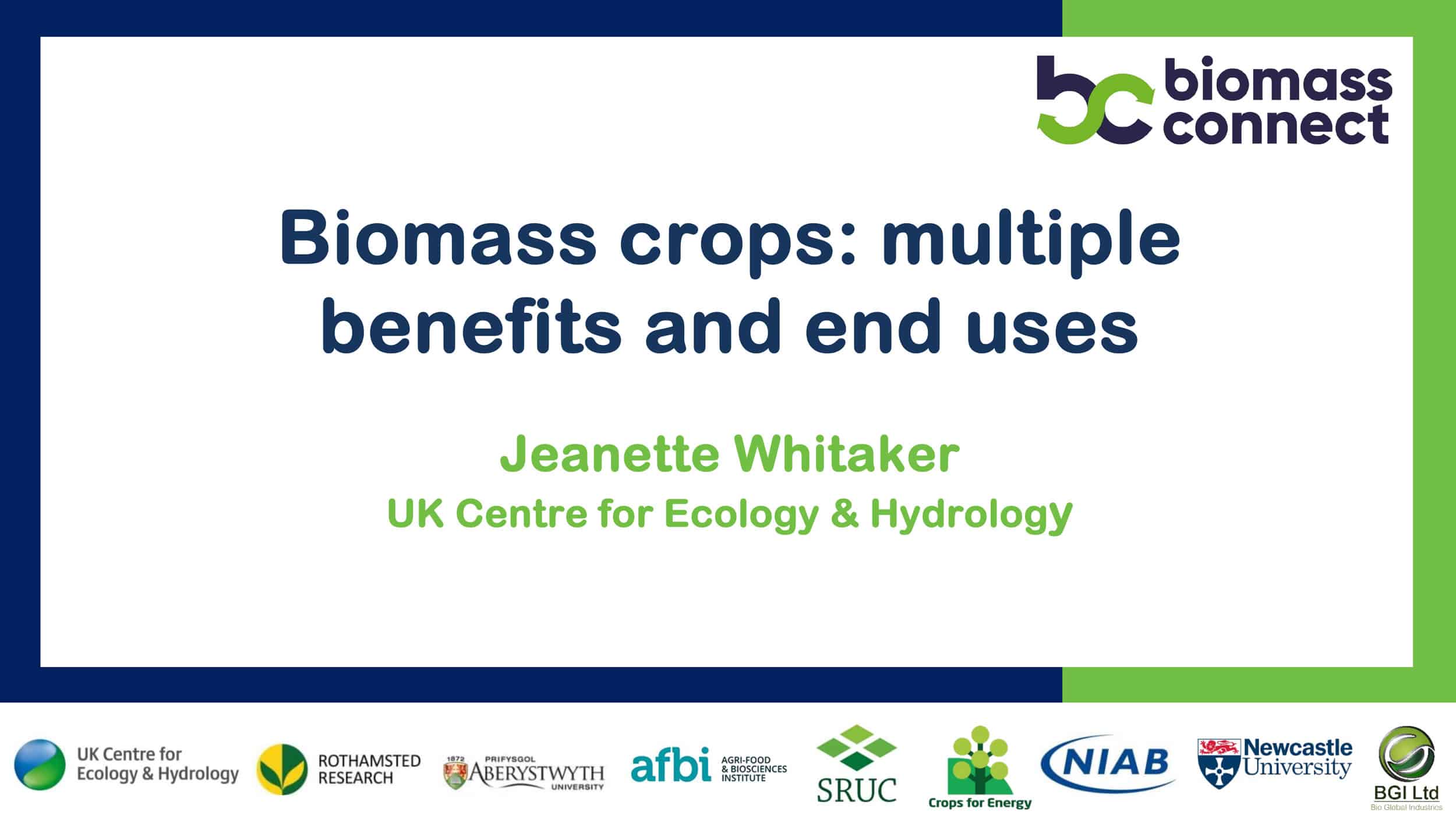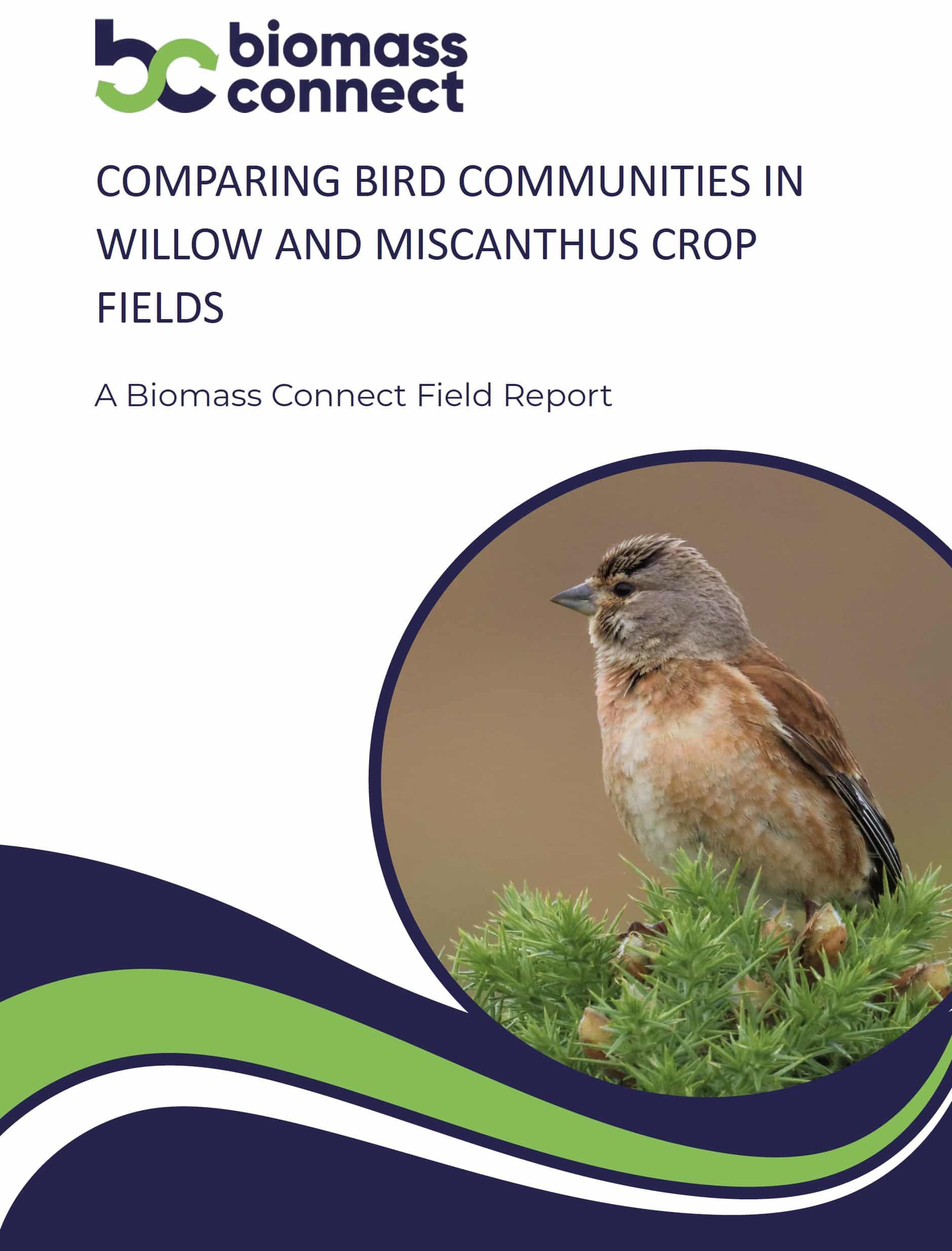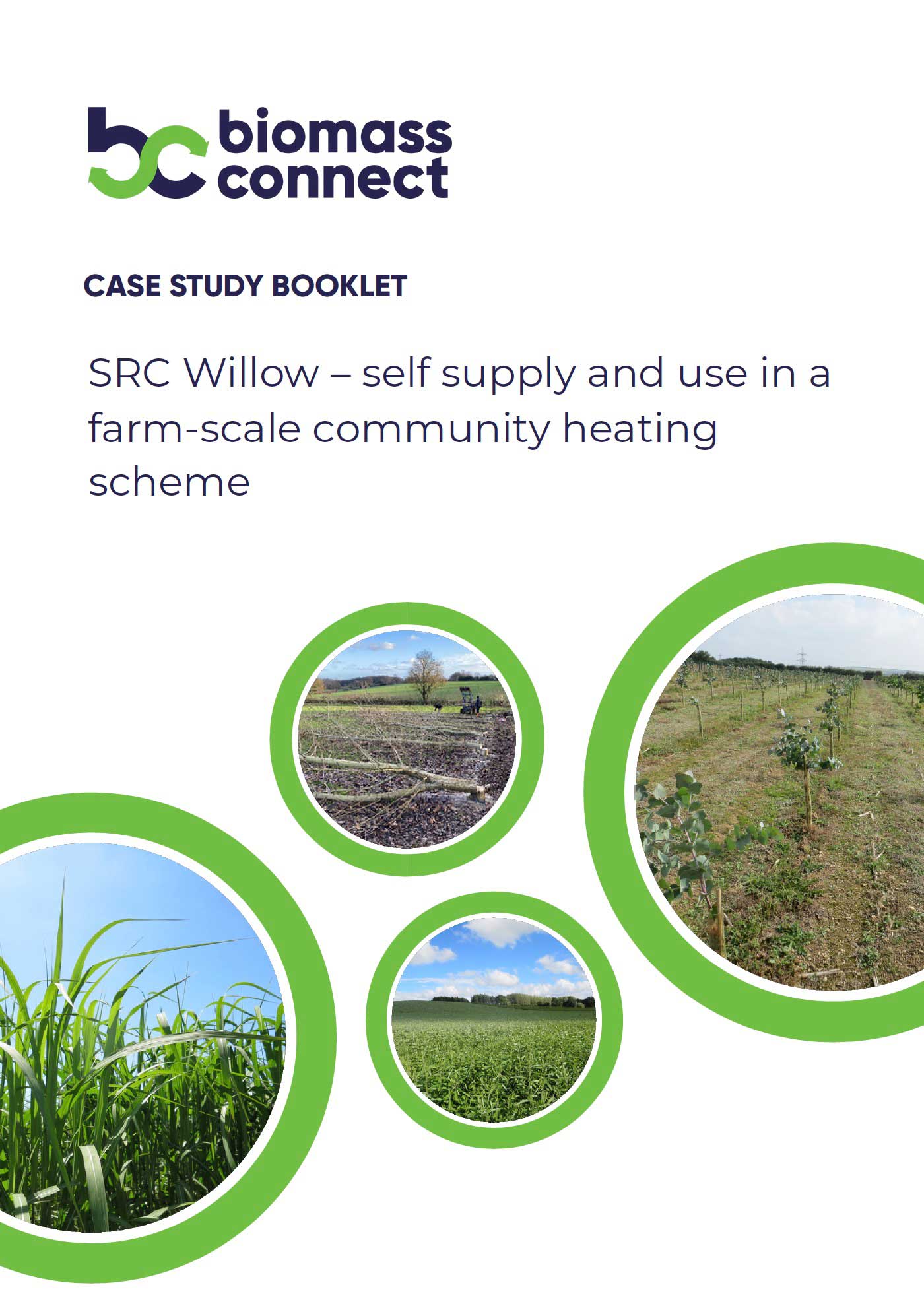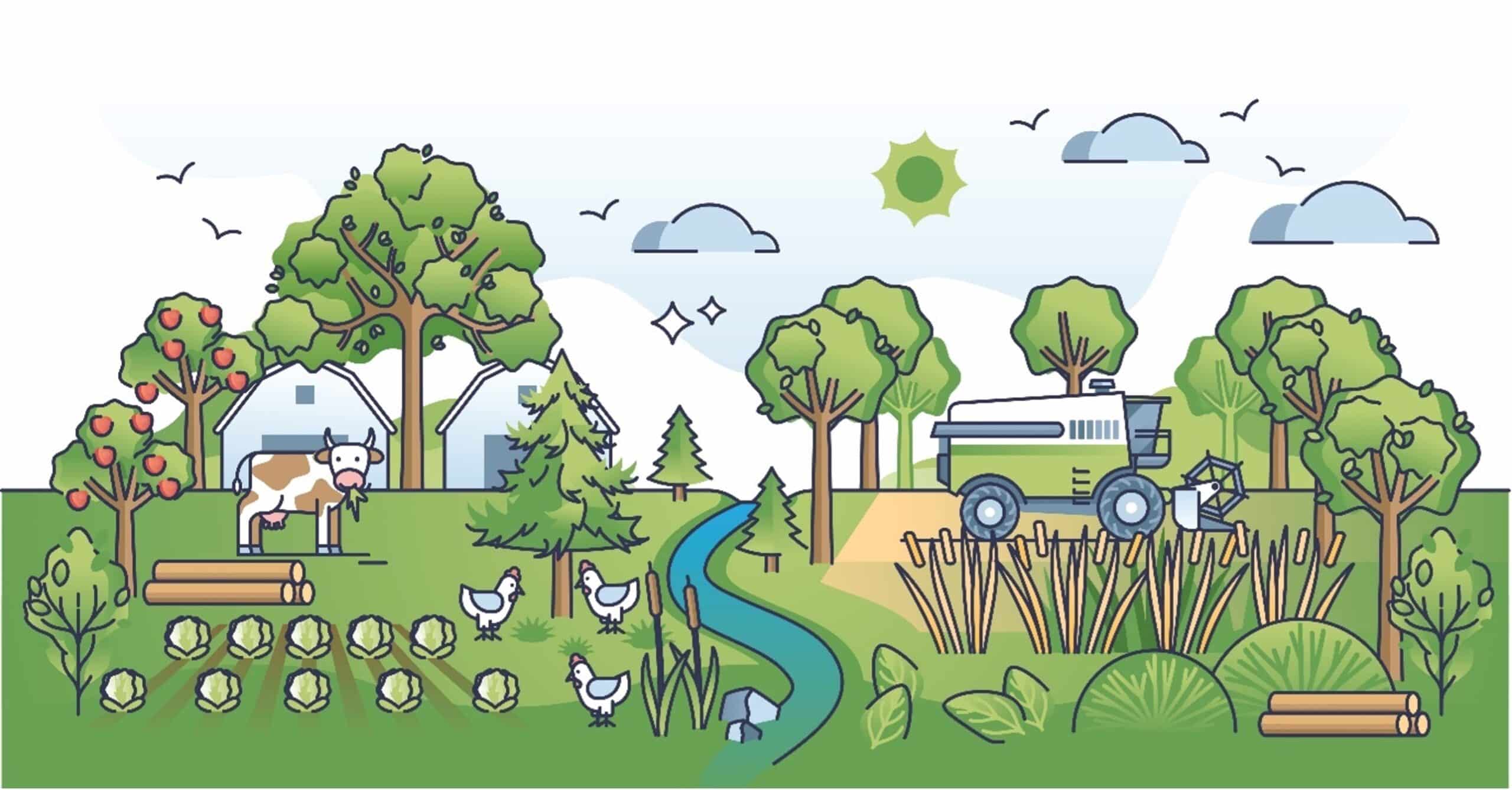Environmental and biodiversity impacts of Miscanthus plantations
Take home messages:
- Miscanthus is regarded as one of the most promising energy crops as it can provide a number of environmental benefits in addition to biomass and can enhance local biodiversity
- Miscanthus plantations are especially useful in nitrate vulnerable zones, the limited requirement for nitrogen makes it a low input crop with low potential for nutrient pollution
- Miscanthus can provide substantially improved habitat for many forms of native wildlife, due to the low intensity of the agricultural management system and the untreated headlands
Introduction
The use of plant biomass for production of heat, power and liquid transport fuels is gaining momentum on a global scale. This is because the energy from green plants has much to offer being renewable and largely carbon neutral compared to combustion of fossil fuels. The UK is one of the countries dedicated to developing a low carbon economy. It was the first government in the world to make a legal commitment to reduce CO2 concentrations. However cultivation of crops, be it for food or biomass, creates disturbances in nature by fostering the growth of species desired by man and stressing unwanted species through soil tillage and pesticide application. Secondly there is impact on ecosystems and associated functions particularly land use.
Extensive cultivation of bioenergy crops will have implications on the landscape, and the social and environmental effects of this shift are not yet well understood. In fact, there is a great deal of debate regarding how the UK’s land resources could support a significant expansion in specialised bioenergy crops given the present and, more importantly, the future demands for food production in the face of climate change.
Few studies have examined the food-agriculture-environment trilemma and have suggested that dedicated biomass crops must have a high yield potential and an additional environmental benefit if they are to be used as feedstock for the production of biofuels. Additionally, biomass crops ought to be produced on marginal agricultural land where climatic, geographic, geological, or economic conditions make it difficult to produce food.
The perennial C4 grasses of the genus Miscanthus attracted a lot of attention as a possible biomass crop in Europe during the 1990s and is now regarded as one of the most promising biomass crops for the establishment of a socially and environmentally sound bioeconomy. Studies suggests that the UK could offset 2-13 Mt of oil equivalent per year by planting Miscanthus. The species from this genus are among the C4 plants that are most tolerant to extreme cold and retain strong CO2 assimilation at temperatures below 15 oC. It is a rhizomatous grass that, with the right growth conditions and cultivation methods, has a high biomass output potential of up to 40 tonnes dry matter (DM) per hectare per year in Europe. However, the production potential is estimated by UK producers to be lower for the UK at around 15 tonnes per hectare. Despite being a strong biomass candidate the impact of cultivation of Miscanthus in light of the concerns raised above must be evaluated. This technical article summarises the studies on the impact of cultivation of Miscanthus on biodiversity and the environment.
Environmental impacts of Miscanthus
Soil Carbon
Compared to vegetation or the atmosphere, the amount of carbon stored in the world’s soils is more than twice as great. It is crucial to comprehend how large-scale agricultural land use change may affect these storage reservoirs. Any type of soil disturbance, including cultivation and ploughing, is likely to cause temporary losses of soil organic carbon that are broken down by increased soil microbial activity. This recurrent annual disturbance under arable agriculture lowers the amount of soil organic carbon (SOC). The occasional disturbance losses in perennial agricultural systems, like grasslands, have time to be replaced, which can lead to increased steady-state soil carbon levels.
On the impact of Miscanthus plants on SOC sequestration, published scientific investigations have produced mixed results. This variation is brought on by the fact that carbon sequestration is sensitive to a variety of variables, such as climate, yearly precipitation, soil texture, initial soil carbon content, and the depth of soil sampling. Despite these differences, there is broad agreement that converting arable land to Miscanthus will boost carbon sequestration, whereas converting grassland may not be as advantageous. Additionally, it is crucial to remember that, in every situation, soil carbon concentrations will not keep rising indefinitely. Instead, a new, higher carbon equilibrium will ultimately be reached, a level which will be dependent on a range of site-specific characteristics.
Soil Condition
Increases in SOC associated with Miscanthus plantations also lead to other enhancements in soil quality, including enhanced soil texture, water retention, and fertility as a result of reduced tillage, as well as increases in litter inputs and soil organic matter (SOM). For instance, a study of four Miscanthus plantations in Germany found that over the course of four years, the SOM storage in the topsoil increased by 11.7 t per hectare. The soil also had more soil aggregates, better hydrophobicity (water repelling) and physical properties. Along with improving soil texture, the extensive root systems of Miscanthus result in significant below-ground biomass storage, which enhances the ability of these plantations to mitigate climate change. Estimated levels of carbon storage per hectare range between 5 and 12 t C over the crop’s 25-year life cycle.
Soil Nitrogen
There is a lot of interest in how Miscanthus plantations may affect nitrogen (N) cycling, leaching, and related changes in water quality because of their long growth seasons, high evapotranspiration rates, and vast root systems. One study reported that after establishment, Miscanthus can result in less nitrate leaching than arable crops, albeit this effect may depend on the N status of the soil (grassland or arable, microbial activity, N mineralisation). Even considering these factors, the establishment of energy grasses would be able to reduce N leaching by 50% according to a Swedish study, with additional benefits arising if these plantations are used as buffer strips alongside watercourses. This suggests that in the UK, these crops may have a similar impact.
Another study examined the leaching over the first three years of M. giganteus production on 38 fields with a variety of soils. In comparison to other crops, minimal to no leaching at all sites was recorded on Miscanthus plantations. The biggest nitrate losses occurred in the first winter following planting, on sites with sandy, shallow soils, and on sites where establishment failed, indicating that better management and site selection could further reduce these losses.
Phytoremediation
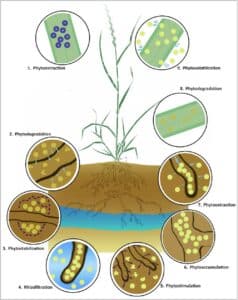
Phytoremediation strategies with the use of grasses
Phytoremediation is the approach of using plants for the in-situ treatment of soils or waters polluted with different inorganic chemicals or heavy metals. Phytoremediation using energy crop is a fast-growing field that offers significant environmental benefits. Miscanthus has a high water efficiency. Miscanthus uses a lot of water to generate big crops of standing biomass when sunshine availability is high and temperatures are suitable. It is therefore a helpful phytoremediation tool. A common use would be to absorb leachate from a landfill’s down gradient or as a cover crop on a closed landfill. Miscanthus has good potential for growth at marginal sites that are not heavily polluted as well as contaminated ones.
An important consideration in case of energy crops is safe management of ash or volatile elements such as mercury or selenium after combustion. But as aerial biomass growth only takes up a little amount of contaminants the biomass can be used to provide energy. In certain instances, reported biomass growth increased when contamination was present. While being produced for its energy value, Miscanthus has the ability to stabilise and possibly eliminate metal pollutants gradually over time. Water use and surface stabilisation by Miscanthus helps prevent metal carried away from the site by wind, soil erosion, or water flow.
Green House Gas Balance
Emissions of greenhouse gases (GHG), especially methane and nitrous oxide from the agriculture or other sectors have a high global warming potential. First-generation energy crops like maize necessitate intensive N fertilisation, and maize farming may be detrimental to the humus equilibrium in the soil. The total greenhouse gas balance may even be negative as a result of the nitrous oxide emission brought on by the use of N fertilisers, meaning that net GHG emissions from first generation biofuels may be higher than those brought on by the use of fossil fuels. Since perennial energy crops produce large amounts of biomass while using few resources, particularly N fertilisation, they are considered to be competitive alternatives.
Methane emissions from Miscanthus plantations are negligible. In fact, because of the significant soil-C sequestration, it really serves as a weak methane sink. Since it is a rhizomatous grass, the N-fixing bacteria in its rhizomes provide the required N. As a result, it produces good yields even in fields that are either unfertilized or only mildly N-fertilized while emitting little nitrous oxide. In fact, a US study found that using N fertilisers increased nitrous oxide emissions, inorganic N fluxes through the soil (mainly nitrate), and harvested N without significantly increasing biomass production. Moreover, as it is a perennial grass CO2 emissions from soil disturbances due to agricultural practices are also negligible.
Impact on biodiversity
Biofuel production drives land-use change, a major cause of biodiversity loss, but there is limited knowledge of how different biofuel crops affect local biodiversity. The Royal Commission on Environmental Pollution stated “the impact of energy crops on biodiversity has not been a topic of significant research in the UK, partly due to the absence of large-scale plantations”. In general, the crop architecture of perennial grasses offers additional cover for wildlife, especially during the winter when other crops and swards are at their shortest, and non-crop vegetation may offer some birds opportunities for feeding and breeding.
Published studies on the impact of Miscanthus on biodiversity, have compared it to existing land use or other energy or annual crops, and both positive and negative impacts have been reported. On the positive impacts, even though Miscanthus does not produce nectar or fruit for wildlife, when integrated into the landscape, its fast-growing three meter tall canes provide continuous habitat cover for woodland and farmland birds, and invertebrate populations in different seasons. Also, the low input management in Miscanthus improve headland and field boundary quality for wildlife. A study in Herefordshire, UK investigated ground flora, small mammal and bird species diversity in young Miscanthus plantations and observed considerably more open-ground bird species such as skylarks (Alauda arvensis), lapwings (Vanellus vanellus) and meadow pipits (Anthus pratensis) within Miscanthus than within reed canary-grass fields. In addition, richer diversity in weed vegetation was observed on Miscanthus fields compared to reed canary-grass or wheat. Likewise, a study in Cambridgeshire reported greater abundance and diversity of farmland birds in Miscanthus fields during the establishment phase of the crop. It was observed that most of the frequently occurring species in winter were woodland birds, whereas in summer farmland birds were more numerous.
Despite these studies having indicated benefits of Miscanthus on biodiversity, it is important to note that these impacts were predominantly occurring in young Miscanthus plantations. These advantages diminish as the crop matures, develops denser and closer canopies, and also depends on size, and crop management. Many of these benefits will be lost if Miscanthus is managed solely to maximize crop yields. Other studies have noted negative impacts of Miscanthus in matured plantations. A study investigated nesting and foraging opportunities for Lapwings (Vanellus vanellus – a priority conservation species in the UK) in and around Miscanthus and Short Rotation Coppice Willow and found that despite Miscanthus providing nesting habitat for Lapwings, there was reduced hatching success compared to arable crops. Also, birds nesting in matured Miscanthus may be more vulnerable and suffer higher predation rates than those in arable crops. This suggest that nesting and foraging opportunities for birds such as skylarks and lapwings may be curtailed in Miscanthus plantations.
Some studies have observed increased earthworm species diversity due to lower ground disturbance and low input use in Miscanthus plantations, although earthworms feeding on Miscanthus leaf litter have showed reduced biomass due to the poor quality of Miscanthus leaf litter. Miscanthus leaf litter has low nitrogen and high carbon which makes it a poor food resource for earthworm feeding.
In an agricultural landscape the majority of wildlife and their food sources are found in interspersed woodland and field margins. Miscanthus can play an important role in this landscape by preventing chemical leaching into these important habitats, removing annual ground disturbance and soil erosion, improving water quality, and providing heterogeneous structure and overwinter cover. Integration of Miscanthus into landscapes should be considered in terms of its potential to increase or decrease biodiversity in land-use change.
Summary
Bioenergy crops are set to increase in the UK and the wider landscape. To develop a sustainable biomass market the impacts of biomass crops on environment and biodiversity must be considered. Any agricultural production is primarily based on human demand and there will always be a trade-off between nature and humans or one benefit and another. Miscanthus is a promising energy crop can provide a range of benefits while minimising environmental harm.
Miscanthus plantation increases soil organic carbon sequestration which in turn improves, soil texture, water retention and fertility. It can be used to recover marginal or contaminated land through phytoremediation. Being a rhizomatous grass, it needs little to no N fertiliser, which means very little N leaching or nitrous oxide emissions from Miscanthus fields. It serves as a weak methane sink thus helping to mitigate global warming potential of this gas. Miscanthus plantations are generally associated with greater biodiversity of invertebrates, insects, birds and small mammals although this effect may decline as the crop matures and its canopy closes.
